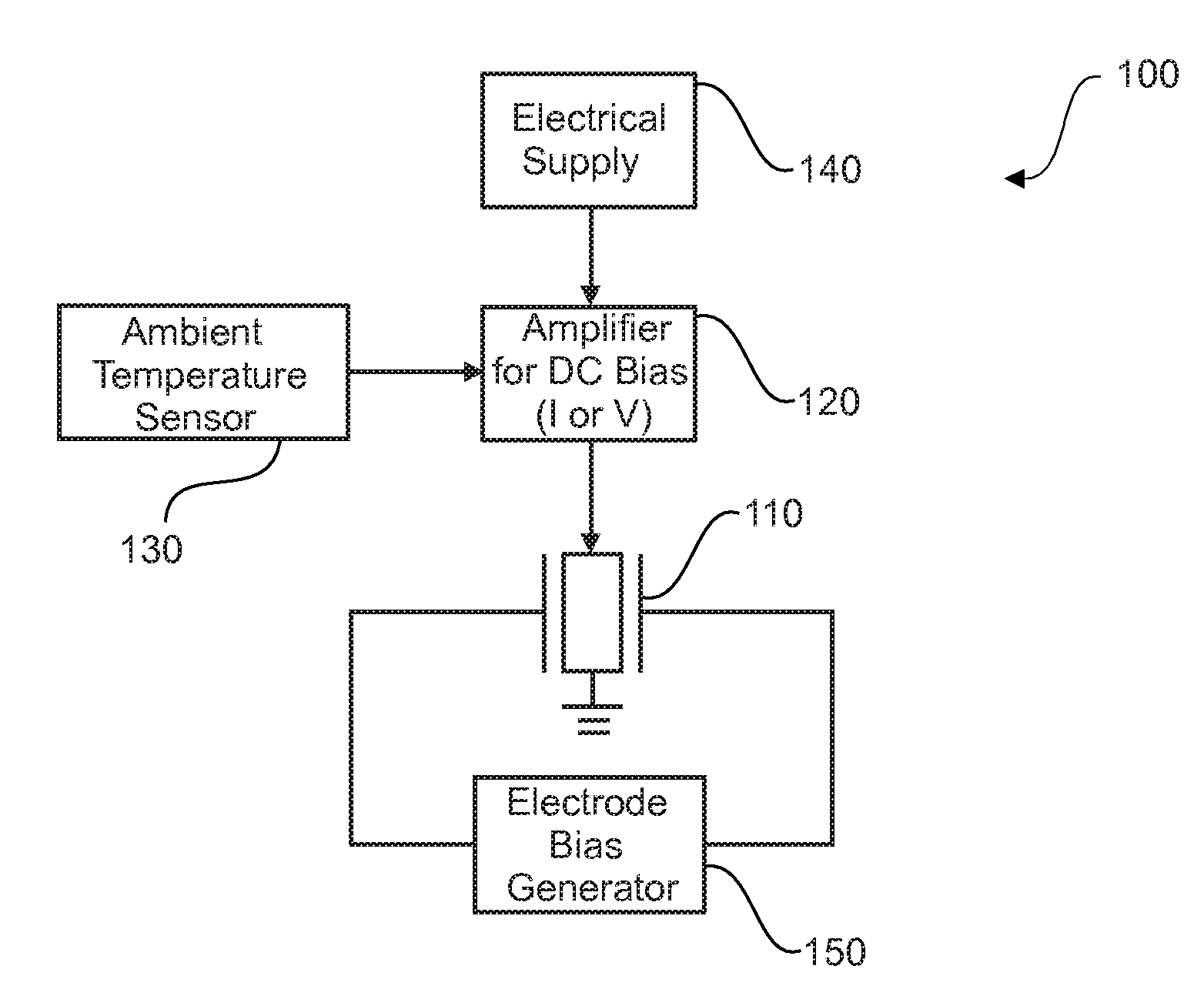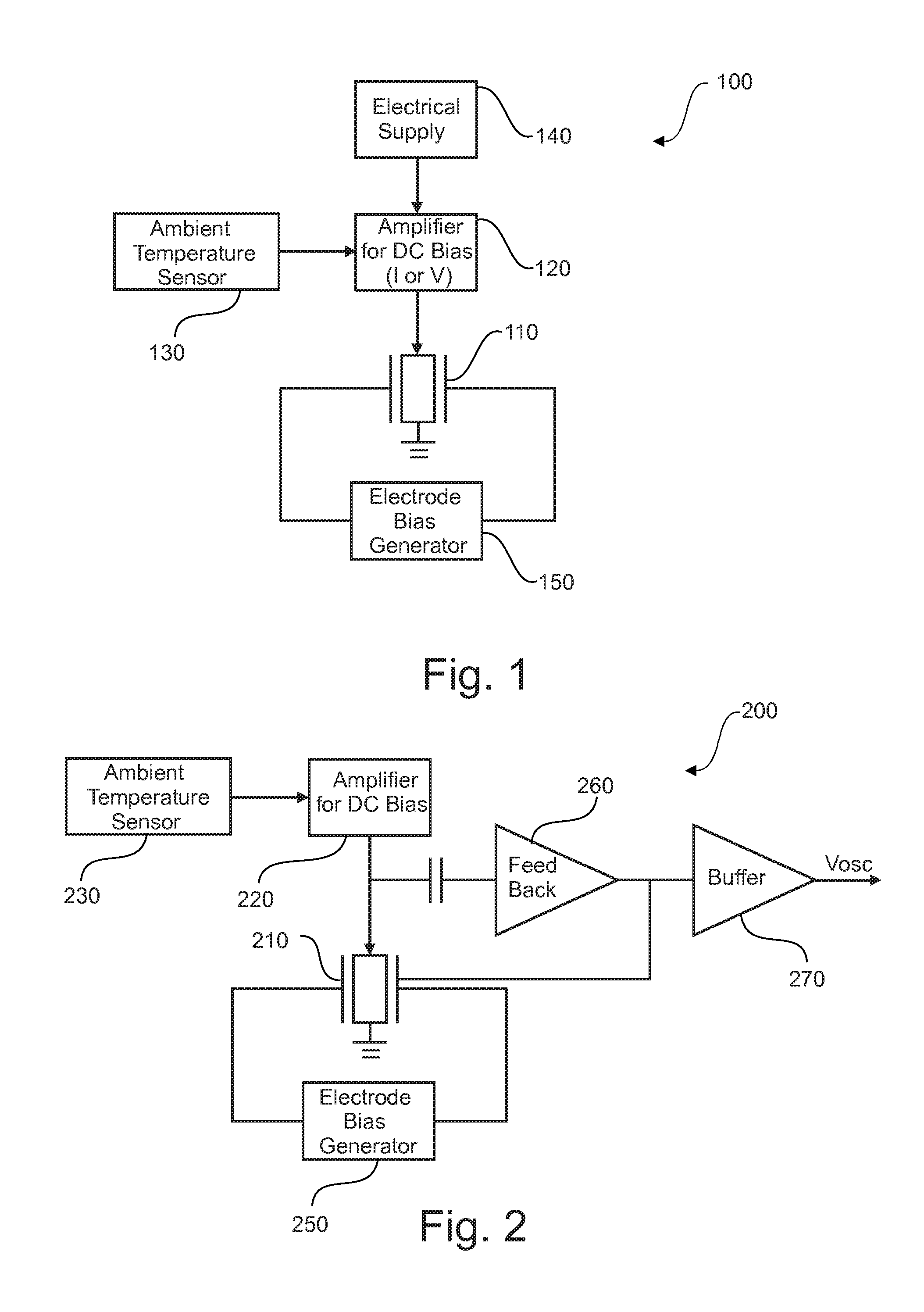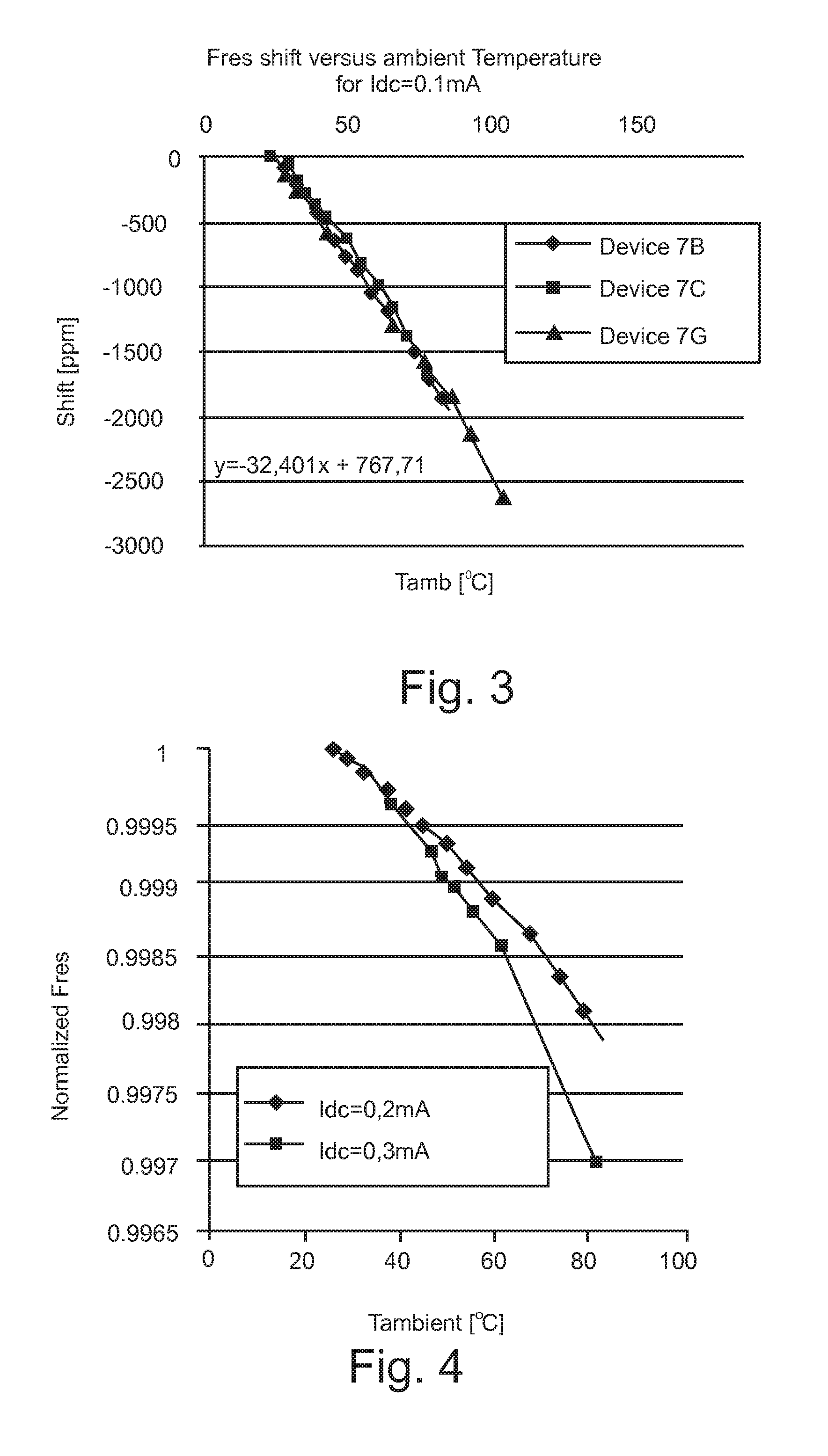Circuit for compensating influence of temperature on a resonator
a technology of resonator circuit and temperature, applied in the direction of piezoelectric/electrostrictive/magnetostrictive devices, piezoelectric/electrostriction/magnetostriction machines, pulse techniques, etc., can solve the problems of mems resonators suffering from one or more of the above drawbacks, heat up the device, etc., and achieve the effect of efficient compensation of the influen
- Summary
- Abstract
- Description
- Claims
- Application Information
AI Technical Summary
Benefits of technology
Problems solved by technology
Method used
Image
Examples
Embodiment Construction
[0055]The illustration in the drawing is schematically. In different drawings, similar or identical elements are provided with the same reference signs.
[0056]Referring to FIG. 3, MEMS resonators made of silicon show production spread and a temperature dependent resonant frequency, which is due to the material properties of silicon. MEMS resonant frequency shifts to a lower value if the ambient temperature is increased. The linear behavior is expected from the temperature dependent Young modulus of crystalline silicon. At this current of 0.1 mA, the device does not heat up enough to see a considerable non-linear effect of self heating in the frequency, ie it is mainly linear.
[0057]In the concept of the piezo-resistive MEMS resonator the oscillation results in an oscillating value for the resistance δR / R (which has to be read as delta R / R) due to the piezo-resistive effect. This effect describes the dependency of the electrical conductivity in the MEMS resonator on the strain in the r...
PUM
 Login to View More
Login to View More Abstract
Description
Claims
Application Information
 Login to View More
Login to View More - R&D
- Intellectual Property
- Life Sciences
- Materials
- Tech Scout
- Unparalleled Data Quality
- Higher Quality Content
- 60% Fewer Hallucinations
Browse by: Latest US Patents, China's latest patents, Technical Efficacy Thesaurus, Application Domain, Technology Topic, Popular Technical Reports.
© 2025 PatSnap. All rights reserved.Legal|Privacy policy|Modern Slavery Act Transparency Statement|Sitemap|About US| Contact US: help@patsnap.com



